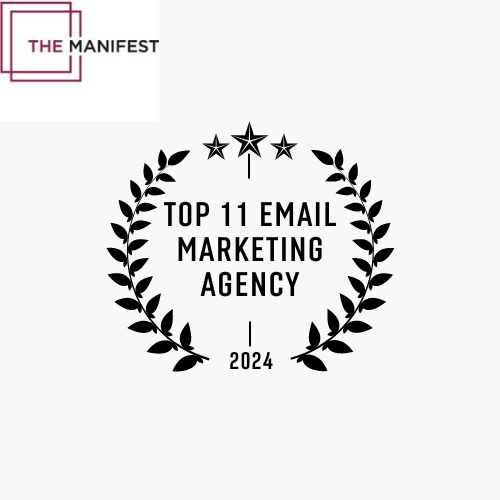In the realm of B2B lead generation, several common questions often arise as businesses seek to optimize their strategies and improve results. In this article, we would like to cover some of these frequently asked questions and help you sort out the aspects of a successful B2B lead generation.
What Is B2B Lead Generation And Why Does It Matter?
Before you start reading any other Q&As, you might be wondering what B2B lead generation is all about and why your business even needs it. We at SalesHarbor believe B2B lead generation is the heartbeat of growth since it’s the strategic process of identifying, attracting, and converting potential clients into qualified leads — prospects who are not yet customers but have demonstrated some level of engagement with a product or service.
In the B2B context, where businesses sell products or services to other businesses, lead generation is crucial for initiating and nurturing relationships that can ultimately result in successful transactions. This can involve tactics such as content marketing, social media engagement, email campaigns, and more. The goal is to move leads through the sales funnel, nurturing them with relevant information and building a relationship that may eventually lead to a business transaction.
Seems like the exact thing you need for your sustainable business expansion, doesn’t it?
What Are The Most Effective Channels For B2B Lead Generation?
This question revolves around selecting the best marketing channels to reach and engage with potential B2B clients, such as content marketing, social media, email, or events. The effectiveness of these channels can depend on the industry, target audience, and specific business goals. The best value is gained when several channels are working in a smart cooperation. Here are some of them:
Content marketing and social media. These channels are the classic of marketing and work best in our digital world, where clients’ attention is easiest to catch on their LinkedIn news feed. Networks and email newsletters help businesses share their content, like posts, whitepapers, or case studies. Share exclusive offers and valuable updates via email, and provide valuable insights in posts to keep leads engaged and informed. Participate in industry discussions in comments, and connect with potential clients. Targeted and personalized campaigns are effective for nurturing leads through the sales funnel.
Besides LinkedIn, networks such as Twitter, Facebook, or Instagram can also be valuable, depending on the industry.
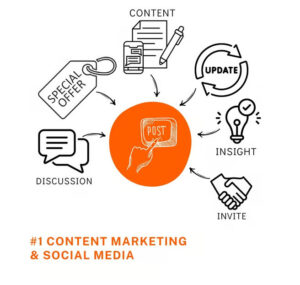
Search Engine Optimization (SEO): Optimizing online content for search engines ensures that businesses are discoverable when potential clients search for relevant products or services. Appearing in organic search results enhances visibility and attracts quality leads.
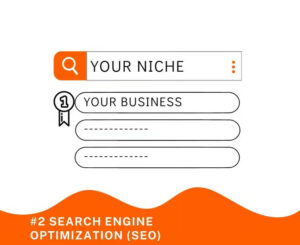
Pay-Per-Click (PPC) Advertising: PPC advertising on platforms like Google Ads allows businesses to target specific keywords and demographics. This method ensures that the business appears prominently in search results, driving targeted traffic.

Webinars and Virtual Events: Hosting webinars and virtual events provides a platform to showcase expertise, engage with leads in real time, and generate interest. These events can be used to demonstrate products, address industry challenges, and capture leads’ contact information. Building relationships through networking events, industry conferences, and partnerships can lead to valuable referrals. Word-of-mouth remains a potent channel for B2B lead generation.
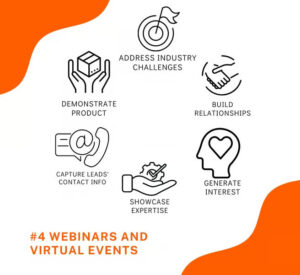
Influencer Marketing: Collaborating with influencers in the industry can help businesses reach a broader audience and build credibility. Influencers can endorse products or services, increasing trust and attracting quality leads.
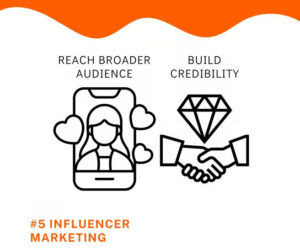
How Can I Identify Ideal B2B Leads?
The art of B2B lead generation begins with identifying your ideal audience. Enhancing lead quality is crucial for ensuring that your B2B lead generation efforts result in valuable prospects who are more likely to convert into customers. Here are some brief steps to filter and nurture your leads:
Step 1. Define Ideal Customer Profiles (ICPs)
Clearly define your Ideal Customer Profiles to effectively target the right audience. Do it based on industry, company size, location, and specific needs. This helps in targeting leads that are more likely to benefit from your products or services.
Step 2. Implement Lead Scoring and Qualification Criteria
Establish clear qualification criteria for leads and develop a lead scoring system to rank leads based on their behavior, engagement level, and characteristics. You may work closely with your sales team to identify characteristics that indicate a lead is ready for more direct engagement and is more likely to convert. Then prioritize leads with higher scores, this will help your choice.
Step 3. Utilize Intent Data
Leverage intent data to identify leads actively researching solutions in your industry. Monitoring online behaviors can provide insights into leads who are closer to making a purchase decision.
Step 4. Regularly Clean and Update Data
Make sure you remove outdated or irrelevant leads regularly and maintain a clean and updated database. Accurate and current data ensures that your efforts are focused on leads with genuine potential.
Step 5. Engage in Account-Based Marketing (ABM)
ABM focuses on targeting specific high-value accounts. It involves personalized and targeted campaigns, ensuring that your efforts are concentrated on leads that align with your business goals.
Step 6. Encourage Referrals
Finally, keep in mind the power of references. Satisfied customers can be a great source of high-quality leads. Encourage feedback and create programs that reward existing customers for recommending your products or services.
By combining these strategies and continuously analyzing and refining your lead generation process, you can enhance lead quality and increase the likelihood of converting leads into valuable, long-term customers.
What Metrics Should I Track to Measure B2B Lead Generation Success?
We at SalesHarbor believe that key performance indicators (KPIs) such as conversion rates, lead-to-customer ratio, and return on investment (ROI) are paramount. That is why we pay special attention to them in our working process. These KPIs collectively provide a comprehensive view of the B2B lead generation process and here is how.
1. Conversion Rates measure the percentage of visitors or leads who take a desired action, such as filling out a form, downloading content, or requesting more information. In B2B lead generation, these actions indicate a level of interest and engagement. High conversion rates suggest that your messaging, offers, and user experience are resonating with your audience. Monitoring conversion rates helps identify effective channels and strategies for turning leads into prospects.
2. Lead-to-Customer Ratio evaluates the proportion of leads that ultimately convert into customers. A high lead-to-customer ratio indicates that your lead generation efforts attract and nurture leads that align with your ideal customer profile. This metric helps in optimizing lead qualification and ensuring a smoother transition from marketing-qualified leads (MQLs) to sales-qualified leads (SQLs).
3. Return on Investment or ROI measures the overall profitability of your B2B lead generation campaigns by comparing the generated revenue to the costs incurred. It provides insights into the financial performance and efficiency of your marketing efforts. Positive ROI indicates that the revenue generated from your lead generation activities exceeds the costs invested.
How to Measure B2B Lead Generation Metrics?
Here are the formulas you need
ROI (%) = [(Revenue – Cost) / Cost] * 100
Lead-to-Customer Ratio = (Number of Customers / Number of Leads) * 100
Conversion Rate (%) = (Number of Conversions / Number of Visitors) * 100
Regularly monitoring and analyzing these metrics helps you refine and optimize your B2B lead generation strategy. You can also gain insights into the performance of your B2B lead generation initiatives and make informed decisions to optimize your strategies.
What Tools And Technologies Are Essential For B2B Lead Generation?
In the dynamic landscape of B2B lead generation, businesses often need technological solutions to stay ahead by streamlining processes, improving organization, and optimizing overall campaign performance.

Below is our list of 10 key tools you may need to enhance B2B lead generation efforts and strategies.
1. Customer Relationship Management (CRM) Systems
Examples: Salesforce, HubSpot, Pipedrive
Role: Centralize customer data, track leads, manage interactions, and facilitate collaboration between sales and marketing teams.
2. Marketing Automation Platforms
Examples: HubSpot Marketing Hub, Marketo, Pardot
Role: Automate marketing tasks, nurture leads through personalized campaigns, and analyze performance to optimize strategies.
3. Email Marketing Tools
Examples: Mailchimp, SendGrid, Constant Contact
Role: Create and send targeted email campaigns, automate follow-ups, and track engagement metrics.
4. Lead Generation Software
Examples: Leadfeeder, ZoomInfo, Clearbit
Role: Identify website visitors, gather contact information, and provide insights into potential leads.
5. Content Management Systems (CMS)
Examples: WordPress, Drupal, Joomla
Role: Create and manage content, publish blogs, and optimize website content for lead generation.
6. Social Media Management Tools
Examples: Hootsuite, Buffer, Sprout Social
Role: Schedule and manage social media posts, engage with leads on social platforms and analyze social media performance.
7. Analytics and Reporting Tools
Examples: Google Analytics, Hotjar, Crazy Egg
Role: Track website traffic, analyze user behavior and measure the performance of lead generation campaigns.
8. Chatbots and Live Chat Software
Examples: Drift, Intercom, LiveChat
Role: Engage website visitors in real-time, answer queries, and qualify leads through automated conversations.
9. Lead Scoring Software
Examples: Infer, MadKudu, Lattice Engines
Role: Evaluate and prioritize leads based on their likelihood to convert, enabling more targeted sales efforts.
10. Survey and Feedback Tools
Examples: SurveyMonkey, Typeform, Qualtrics
Role: Gather feedback from leads and customers, understand preferences, and refine lead generation strategies.
Explore and integrate these tools into your B2B lead generation strategy, so you can empower your business with a robust and efficient ecosystem that enhances engagement, personalization, and overall campaign success.
HubSpot also published an article on B2B Lead Generation Tools.
How Can You Adapt to Emerging Trends in B2B Lead Generation?
Stay informed! We released an article highlighting 5 trends in B2B lead generation set to shape the industry in the coming year 2024. Staying informed ensures businesses can adapt their lead-generation strategies to align with current trends and remain relevant to consumer expectations. Keep an eye on emerging trends such as AI integration, interactive content, and virtual events. Adapting to these trends ensures your B2B lead generation remains innovative and effective.
Here are some tips about how to stay abreast of B2B marketing and lead generation trends:
Engage with industry thought leaders on platforms like LinkedIn, Twitter, or Facebook to learn about new tendencies in the field and analyze competitor tactics. Cultivate a professional network for valuable insights.
Regularly attend webinars, and conferences and actively participate in B2B forums.
Utilize news aggregation tools to curate relevant updates or you may establish Google Alerts for industry keywords.
Read industry white papers, and embrace a mindset of continuous learning.
This multifaceted approach ensures a comprehensive understanding of emerging trends, allowing your business to adapt strategies, enhance lead generation efforts, and maintain a competitive edge in the dynamic B2B landscape.
Conclusion
Knowledge is your most powerful tool. In this article we have covered fundamental principles and concepts which unlock the path to success in B2B lead generating. With these answers at your fingertips, embark on your B2B journey with confidence, knowing you’re armed with the insights needed to elevate your lead generation game.
Subscribe to our newsletter for more valuable content.


